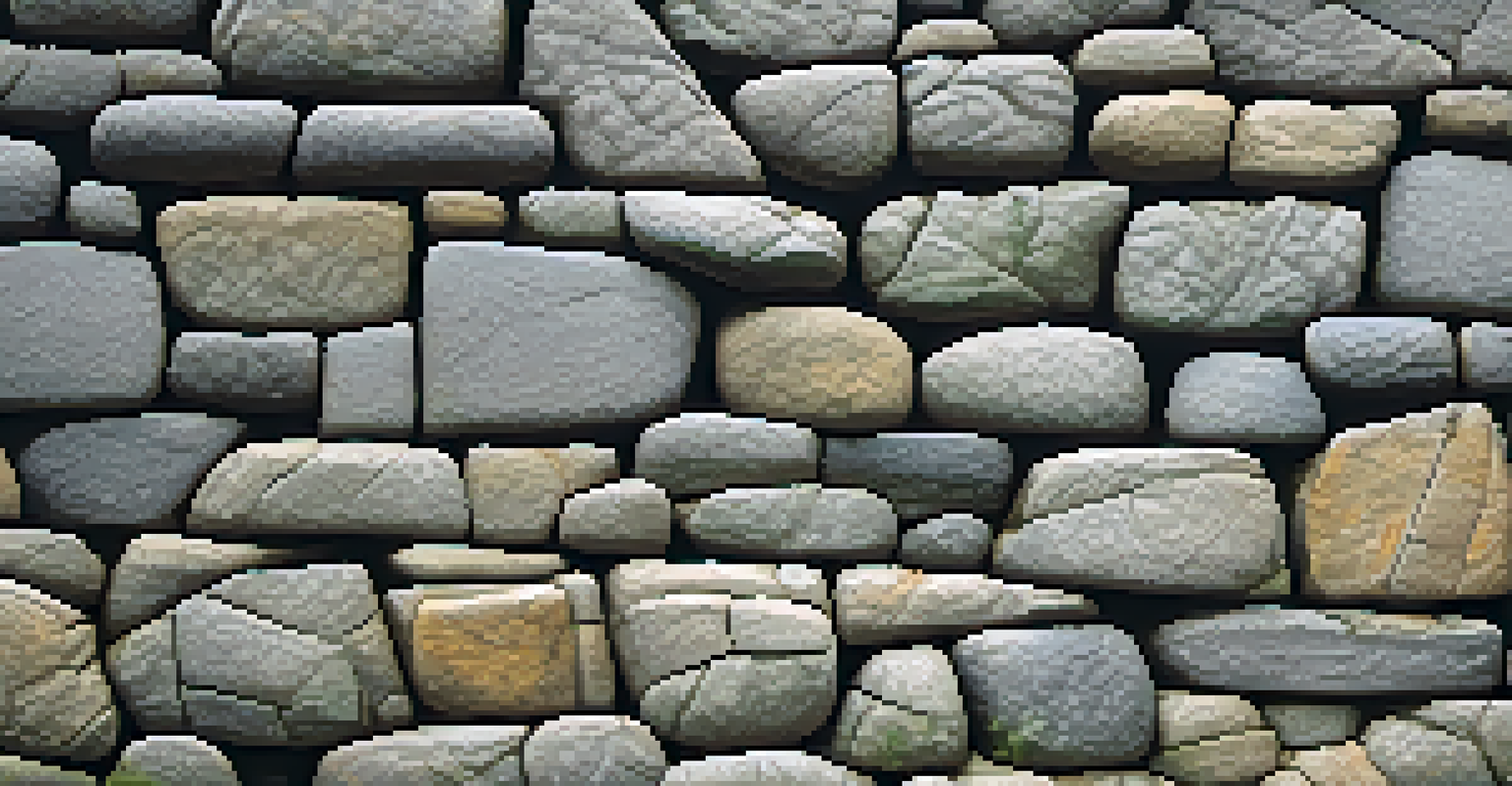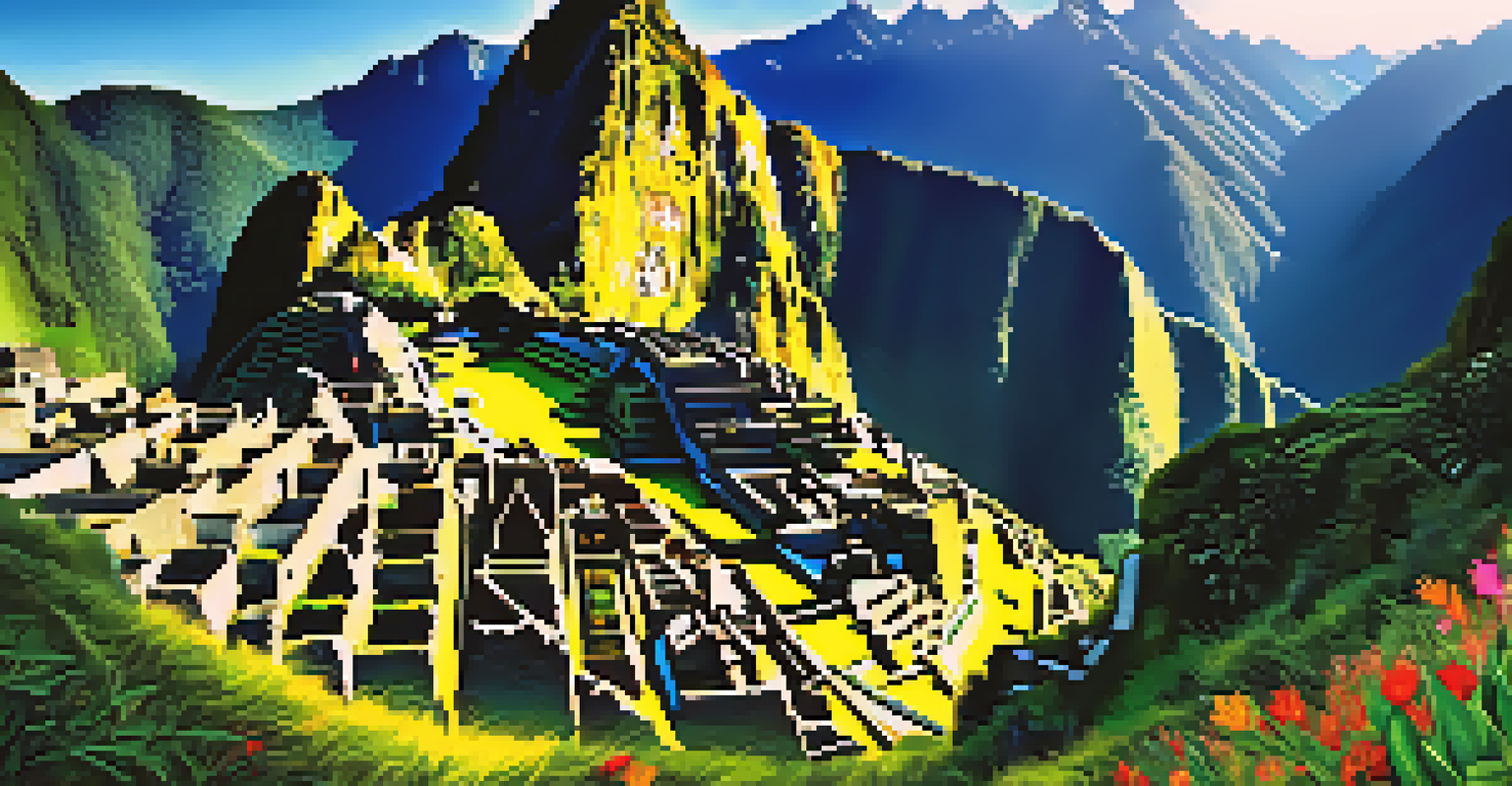Machu Picchu: An Incan Citadel Steeped in History

The Enigmatic Origins of Machu Picchu
Machu Picchu, often referred to as the 'Lost City of the Incas,' was built in the 15th century during the reign of Emperor Pachacuti. Nestled high in the Andes Mountains, this remarkable site showcases the architectural ingenuity of the Incas. Its original purpose remains a mystery; some believe it was a royal estate, while others think it served as a religious retreat.
Machu Picchu is a symbol of the Incan civilization, representing not just their architectural prowess but their deep connection to nature and spirituality.
The location of Machu Picchu is no accident. Perched at an elevation of 2,430 meters, it was strategically placed for both defense and agricultural purposes. The surrounding terraced fields demonstrate the Incas' advanced understanding of farming on steep slopes, which was crucial for sustaining their civilization.
Despite its significance, Machu Picchu was abandoned during the Spanish Conquest and lay hidden from the modern world until its rediscovery in 1911 by American explorer Hiram Bingham. This revelation sparked global interest, leading to ongoing archaeological studies that continue to unveil its secrets.
Architectural Marvels of the Citadel
One of the most captivating aspects of Machu Picchu is its intricate stonework. The Incas utilized a technique called ashlar masonry, where stones are cut to fit together perfectly without the use of mortar. This not only adds to the site's beauty but also enhances its earthquake resistance—a critical feature in this seismic region.

The layout of Machu Picchu is another testament to Incan ingenuity. The site is divided into an agricultural sector, residential areas, and religious sites, all interconnected by a network of paths. Each structure is thoughtfully positioned to align with the surrounding landscape, creating a harmonious blend of nature and architecture.
Machu Picchu's Mysterious Origins
Built in the 15th century, Machu Picchu's original purpose remains a mystery, with theories suggesting it was either a royal estate or a religious retreat.
Notable structures include the Temple of the Sun and the Intihuatana stone, which is believed to have served as a ritual stone associated with astronomy. These features highlight the Incas' deep connection to spirituality and the cosmos, further enriching the site's historical significance.
Cultural Significance of Machu Picchu
Machu Picchu is not just an archaeological site; it is a symbol of Incan culture and resilience. The citadel represents the height of Incan civilization and serves as a reminder of their advanced societal structures, agricultural practices, and architectural skills. It embodies the Incan philosophy of living in harmony with nature.
The journey to Machu Picchu is as transformative as the destination itself, inviting visitors to reflect on history and their own place within it.
Visitors to Machu Picchu often experience a sense of connection to the past, as they walk through the same paths that Incan royalty might have traversed. This connection is not only historical but also emotional, as many travelers feel a deep reverence for the spirit of the Incas that still lingers in the air.
Moreover, the site has become a UNESCO World Heritage Site and is recognized as one of the New Seven Wonders of the World. This prestigious status underscores its importance not only to Peru but to the global community as a treasure of human achievement and cultural heritage.
Exploring the Biodiversity Around Machu Picchu
The region surrounding Machu Picchu is rich in biodiversity, boasting a unique ecosystem that supports a variety of plant and animal species. The convergence of different climatic zones, from dry highland to humid tropical forest, creates a vibrant habitat that is home to many endemic species.
Visitors may encounter the Andean condor soaring above or the elusive spectacled bear roaming the cloud forests. This incredible wildlife is a reminder of the ecological significance of the area and highlights the importance of conservation efforts to protect these natural treasures.
Architectural Ingenuity of the Incas
The site features impressive ashlar masonry and a thoughtfully planned layout that reflects the Incas' advanced engineering and deep connection to the surrounding landscape.
The flora is equally diverse, with over 400 species of orchids alone, alongside numerous medicinal plants that have been used by local communities for generations. This natural wealth enhances the overall experience of visiting Machu Picchu, intertwining history and nature in a captivating way.
The Journey to Machu Picchu
Getting to Machu Picchu is an adventure in itself, often beginning in the charming town of Aguas Calientes. From there, visitors can take a scenic train ride along the Urubamba River, surrounded by breathtaking landscapes. The train journey provides a unique perspective of the Andes, setting the stage for the wonders that await.
For the more adventurous, the Inca Trail offers a challenging trek that leads directly to the citadel. This multi-day hike takes travelers through stunning mountain vistas, lush vegetation, and ancient ruins, allowing them to immerse themselves in the Incan experience. It’s a physical journey that enhances the emotional connection to the site.
Whichever route you choose, arriving at Machu Picchu is a moment of awe. The first glimpse of the citadel, often shrouded in mist, feels like stepping into a different time. It’s an experience that resonates deeply, making the effort to get there all the more worthwhile.
Preservation Efforts at Machu Picchu
As one of the most visited tourist sites in the world, Machu Picchu faces challenges related to preservation and sustainability. The influx of visitors can put stress on the delicate ecosystem and the ancient structures. Therefore, the Peruvian government and various organizations are implementing measures to protect this iconic site.
These efforts include regulating the number of daily visitors and promoting responsible tourism practices. By encouraging travelers to respect the site and its surrounding environment, authorities aim to minimize the impact of human activity on this precious cultural heritage.
Biodiversity Surrounding the Citadel
The rich ecosystem around Machu Picchu is home to diverse wildlife and plant species, highlighting the area's ecological significance and the importance of conservation efforts.
Furthermore, ongoing archaeological research and restoration projects are crucial for maintaining the integrity of Machu Picchu. By investing in these initiatives, we can ensure that future generations can enjoy and learn from this incredible testament to Incan achievement.
Experiencing Machu Picchu: Tips for Visitors
Visiting Machu Picchu can be a life-changing experience, but planning ahead can enhance your trip. First, consider the timing of your visit; the dry season from May to September offers the best weather for exploring. However, this is also peak tourist season, so arriving early in the morning can help you avoid crowds and capture stunning photos.
Be sure to wear comfortable walking shoes, as the terrain can be uneven and steep in places. Bringing a reusable water bottle is also recommended, as staying hydrated is essential during your exploration. Additionally, hiring a knowledgeable guide can provide deeper insights into the history and significance of the site.

Lastly, take a moment to pause and soak in the breathtaking views. Whether you're gazing at the ancient ruins against the backdrop of lush green mountains or watching the sunrise over the citadel, these moments of reflection will enhance your appreciation for this incredible wonder.